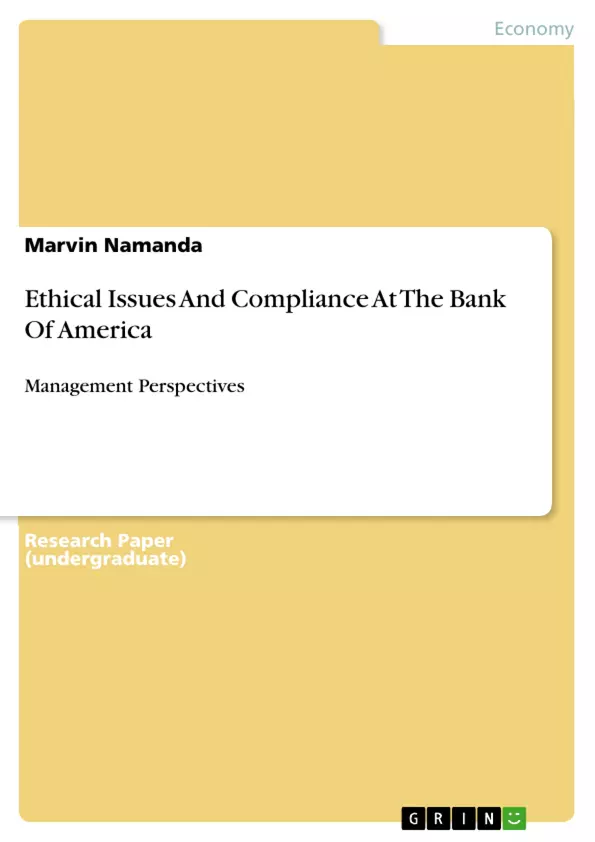This report analyses the external and internal business environments that could be the cause of the ethical lapses; giving steps towards mitigating the lapse. Ethical issues and compliance are a challenge facing Bank of America. Ethical issues affect all the stakeholders in a given business. There has been a perception that the financial institutions across the world tend to be more unethical than any other forms of business. This perception could be justified by the issues facing Bank of America.
Complaints of constant lapses in the ethical culture of the bank are rife. The most recent ethical scandal was where the bank is accused to be only interested in short-term returns and not paying attention to the products that are suitable for customers. According to Mujtab (2010:23), the implementation of the Payment Protection Insurance by the Bank of America is an unacceptable measure in respect to the Finance Act (2001). This insurance policy saw overdraft charges being imposed on small business account holders. Interest swaps were also charged on small business holders, a thing that is only done on large corporations by other banking institutions.
On the 25 June 2012, the Financial Services Authority (FSA) announced that it had found numerous errors in the way Bank of America had sold complex financial products to around 25,000 small and medium sized businesses. These interest swabs were designed to protect small-sized business customers. However, the mis-selling by the bank resulted to severe effects on the small businesses. The ethical concerns raised here were that the policy was too complex for the business owners to appreciate and that the product was conditional upon the clients. The bank has come under immense public condemnation calling for cultural and management change.
Table of Contents
- Introduction
- Executive Summary
- The Ethical and Compliance Issues
- Internal Business Environment
- External Business Environment
- Response to the ethical challenges
- Strategic Planning and Organizational Structure Change
- Management Roles
- Functions of the management
- Measuring the success of the strategic responses
- Possible ethical issues in implementing the strategic plans
- Conclusion
- Recommendations
Objectives and Key Themes
This report aims to analyze the ethical issues facing Bank of America, exploring both internal and external factors contributing to these challenges. The report then explores potential strategic responses to these issues, evaluating their effectiveness and potential implications.
- Ethical issues and compliance in the banking industry
- Impact of internal and external business environments on ethical behavior
- Strategic planning and organizational structure changes in response to ethical challenges
- Measuring the success of strategic responses and identifying potential ethical issues in implementation
Chapter Summaries
- Introduction: Provides an overview of Bank of America's structure and its place in the banking industry, highlighting its competitive advantage and corporate social responsibility activities.
- Executive Summary: Highlights the ethical challenges facing Bank of America, including allegations of unethical practices and the perception of a lack of focus on customer needs.
- The Ethical and Compliance Issues: Delves into the internal and external business environment factors contributing to ethical lapses. The internal environment includes employee behavior, client relations, conflict between company demands and professional duty, and customer service. External factors discussed include technological influences, the social environment, and political and economic aspects.
Keywords
The core topics explored in this report include ethical issues in the banking industry, corporate social responsibility, internal and external business environments, employee behavior, client relations, strategic planning, organizational structure, and ethical challenges.
- Citation du texte
- Marvin Namanda (Auteur), 2014, Ethical Issues And Compliance At The Bank Of America, Munich, GRIN Verlag, https://www.grin.com/document/317965



